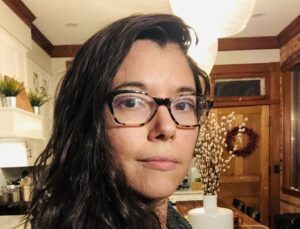My PhD research focused on identifying the size and mineralogical composition of interstellar dust through X-ray imaging of dust scattering halos to X-ray spectroscopy of bright objects to study absorption from intervening material. Over the course of my PhD I also developed an open source, object oriented approach to computing extinction properties of particles in Python that allows the user to change the scattering physics models and composition properties of dust grains very easily. In many cases, the signal I look for from interstellar dust requires evaluating the observational data on the 1-5% level. This has required me to develop a deep understanding of both the instrument and the counting statistics (because modern-day X-ray instruments are photon counting tools). My expertise led me to a postdoc at MIT, where I developed techniques to obtain high resolution X-ray spectra from low surface brightness (high background) sources imaged with the Chandra X-ray Observatory High Energy Transmission Grating Spectrometer. I pioneered these techniques in order to extract and analyze the high resolution spectrum of Sgr A*, our Galaxy’s central supermassive black hole (SMBH), producing a legacy dataset with a precision that will not be replaceable for decades. This dataset will be used to understand why Sgr A* is anomalously inactive, giving us clues to the connection between SMBH activity and galactic evolution. In order to publish the work, I developed an open source software package, pyXsis (github.com/eblur/pyxsis) in order to model the low signal-to-noise spectrum of Sgr A* simultaneously with a non-physical parameteric model of the background spectrum (Corrales et al., 2020). As a result of my vocal advocacy for Python compatible software tools and a modular approach to X-ray data analysis, I became Chair for HEACIT (which stands for “High Energy Astrophysics Codes, Interfaces, and Tools”), a new self-appointed working group of X-ray software engineers and early career scientists interested in developing tools for future X-ray observatories. We are working to identify science cases that high energy astronomers find difficult to support with the current software libraries, provide a central and publicly available online forum for tutorials and discussion of current software libraries, and develop a set of best practices for X-ray data analysis. My research focus is now turning to exoplanet atmospheres, where I hope to measure absorption from molecules and aerosols in the UV. Utilizing UM access to the Neil Gehrels Swift Observatory, I work to observe the dip in a star’s brightness caused by occultation (transit) from a foreground planet. Transit depths are typically <1%, and telescopes like Swift were not originally designed with transit measurements (i.e., this level of precision) in mind. As a result, this research strongly depends on robust methods of scientific inference from noisy datasets.
As a graduate student, I attended some of the early “Python in Astronomy” workshops. While there, I wrote Jupyter Notebook tutorials that helped launch the Astropy Tutorials project (github.com/astropy/astropy-tutorials), which expanded to Learn Astropy (learn.astropy.org), for which I am a lead developer. Since then, I have also become a leader within the larger Astropy collaboration. I have helped develop the Astropy Project governance structure, hired maintainers, organized workshops, and maintained an AAS presence for the Astropy Project and NumFocus (the non-profit umbrella organization that works to sustain open source software communities in scientific computing) for the last several years. As a woman of color in a STEM field, I work to clear a path by teaching the skills I have learned along the way to other underrepresented groups in STEM. This year I piloted WoCCode (Women of Color Code), an online network and webinar series for women from minoritized backgrounds to share expertise and support each other in contributing to open source software communities.
